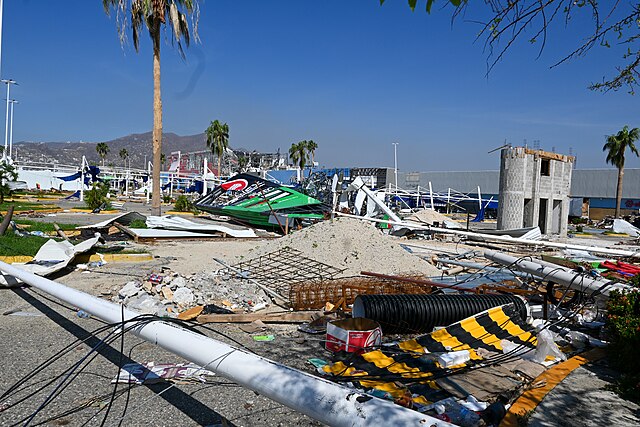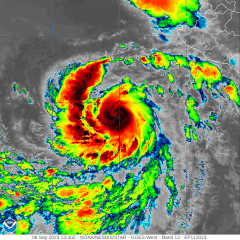 It was a calm morning on October 25th as a breeze blew through the beautiful city of Acapulco, Mexico.
It was a calm morning on October 25th as a breeze blew through the beautiful city of Acapulco, Mexico.
Otis, a moderate tropical storm, was projected to make landfall on its coast.
However, as the sleepy residents of Acapulco would tragically find out, this breeze would evolve into something much worse. What went wrong? Let’s find out...
What is Rapid Intensification?
Within 24 hours, Otis’ winds strengthened by 115 mph, the fastest intensification since Hurricane Patricia in 2015. This phenomenon is known as rapid intensification, and it occurs when a storm’s sustained winds increase at least 35 mph within a 24-hour window.
High ocean temperatures can heighten this risk. According to the National Oceanic and Atmospheric Administration (NOAA), more than 90% of global warming has occurred in the oceans.
During Otis, surface water temperatures were measured at a sultry 88º F. The uptick in ocean warmth boosted Otis’ development and fueled its rapid intensification, making it an incredibly unpredictable event for the residents of Acapulco. As the Category 5 hurricane made landfall in Acapulco, its 165 mph winds were the strongest Mexico’s Pacific coast has ever endured.
Acapulco’s Damage
 So far, Otis is responsible for the death of 46 people, and 58 are missing. However, the unofficial death toll may be higher as dozens of boats and fishermen were out at sea during the time of the hurricane. In fact, according to Alejandro Martínez Sidney (president of the local chamber of commerce), officials counted more than 120 people dead or missing at sea.
So far, Otis is responsible for the death of 46 people, and 58 are missing. However, the unofficial death toll may be higher as dozens of boats and fishermen were out at sea during the time of the hurricane. In fact, according to Alejandro Martínez Sidney (president of the local chamber of commerce), officials counted more than 120 people dead or missing at sea.
Outside of casualties, Acapulco’s economy has been severely impacted by the collapse of more than 63,000 businesses. Specifically, approximately 80% of Acapulco’s hotels were damaged by the storm. This has profound consequences, as the tourism industry is the largest sector of Acapulco’s economy.
Much of the city thrives on business associated with tourism - from travel, restaurants, hotels, etc. According to Steve Brown (chief science officer for Gallagher Re), the cost of rebuilding and lost business is estimated at $10 billion. Fortunately, the Mexican Government has taken steps to help Acapulco recover.
Acapulco’s Reconstruction
Mexico’s President, Andrés Manuel López Obrador, recently announced that $4.3 billion would be dedicated to the immediate reconstruction of Acapulco. Included in this plan are 250,000 packages of food and appliances and $2,000 to $3,000 per damaged home.
The government plans to deploy 13,000 troops to Acapulco in an effort to help direct the reconstruction plan. As of now, it’s reported that 7,500 provisions and 7,000 liters of water were distributed among the people of Acapulco.
Additionally, Tourism Secretary Santos Ramírez Cuevas explained a plan in which skilled workers will be hired and trained in electrical installation, plumbing, and construction to help restore the city.
Although Hurricane Otis ravaged Acapulco, it’s important to note Acapulco’s progress toward a solution. Through collaboration and strategic thinking, Mexico has instituted several plans to assist in rebuilding the scenic city. They seek to use Acapulco’s reconstruction as a way to rebuild its reputation as a top destination. Let’s hope they recover quickly!
Sources: NPR, Accuweather, Washington Post, ABC






